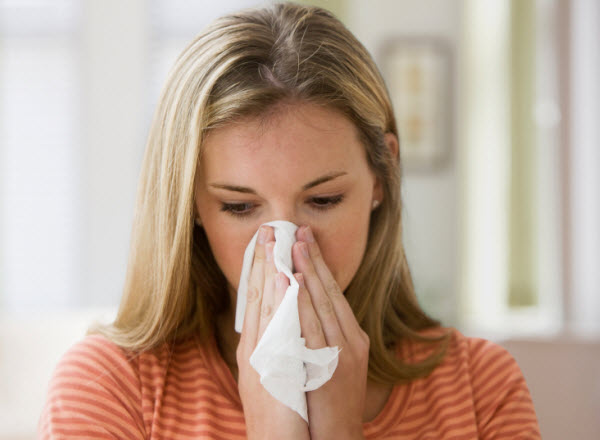The birds are chirping, flowers are blooming, and Spring is here! For many, this also heralds a worsening of their unpleasant hay fever symptoms. These include sneezing, runny and itchy nose, sore throat, itchy and watery eyes, and asthma. Short of taking medications, there are many steps you can take to “allergy-proof” your home and alleviate your symptoms.
One of the most common household allergens are dust mites, which are microscopic organisms that live in woven materials and feed on shed human and animal skin. Other culprits include animal dander (commonly from cats and dogs, but also from birds, rodents, and ferrets), insects, mold, and outdoor pollen. Below is a list of strategies to eliminate these common household allergens.
General:
Humidity supports the growth of dust mites, cockroaches, and mold. To target these allergens, reduce indoor humidity to less than 50 percent with a dehumidifier or air conditioner. Humidity monitors can be purchased at most hardware stores.
Dust mites:
Encase your mattress, pillows, comforters, furniture, and box springs in mite-impermeable covers. Wash bedding weekly in warm water with detergent, or dry them in an electric dryer on the hottest setting. Vacuum or wash your carpet and rugs weekly. In bedrooms, try to minimize carpet, upholstered furniture (replace with washable vinyl, leather, or wood), stuffed toys, and drapes (replace with roller-type shades).
Animal dander:
Keep pets outside the home. Once they are removed, thoroughly clean or replace carpets, bedding, sofas, and curtains. If pets are in the home, use a vacuum cleaner with a HEPA (high-efficiency particulate air) filter and a double-thickness vacuum bag. Replace the filter as recommended by the manufacturer.
Indoor mold:
Clean moldy surfaces (sinks, tubs, tiles) every few weeks with a dilute bleach solution (1oz/30mL bleach in 1 quart/1L of water). To reduce humidity, remove house plants, fix water leaks, unclog faulty drains in sinks and showers, and use exhaust fans in the bathroom. Avoid using evaporative (or swamp) coolers, but if you have them, be sure to clean them regularly.
Cockroaches:
Use poison bait or traps to control infestations, and frequently clean cockroach debris from the home. Consult a professional exterminator for severe or recurrent infestations. Store all food in sealed containers, wash dishes promptly, and store garbage and food waste outside the home. Fixing any water leaks in your home may also help.
Rodents:
Consult a professional exterminator. Perform a thorough cleaning of your home periodically. Store all food in sealed containers and transfer garbage promptly outside the home. Repair holes in the walls, doors, floors of your home, and block any other entry points.
Outdoor Allergens:
Keep windows in the home and car closed to avoid allergens from tracking in. Use air conditioners during peak symptoms to filter the air. Consider using a mask during outdoor activities such as mowing the lawn. Shower before bed to remove allergens from the skin and hair and to avoid contaminating bedding. Use nasal saline sprays or rinses to clear allergens from nasal lining.
Managing your hay fever symptoms can be very tricky. Hopefully by using the above tips, with or without medication, you can get some much-needed relief this Spring!



